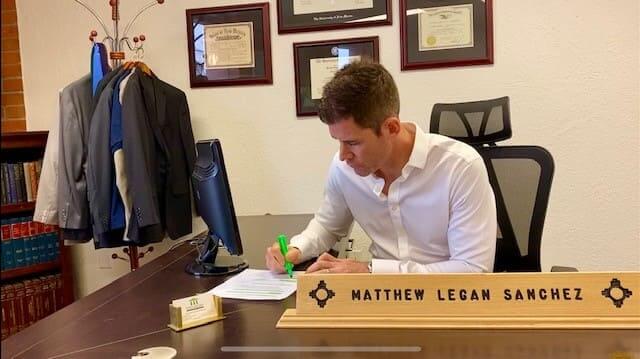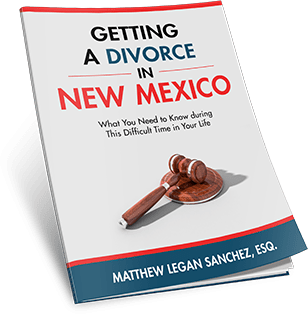Your judge finally signed your Final Decree of Dissolution of Marriage. Congratulations – you’ve reached the finish line of your divorce. After months of attorneys, discovery, litigation, hearings, mediation, and possibly a trial – you are finally divorced. A rush of relief flows through your entire body as a smile crosses your face.
Completing a divorce can be one of the most memorable moments of your life. It’s understandable that after jumping for joy you want to immediately jump into a new life that is free from your ex. Despite this feeling, it is important to understand that there are a number of hurdles that you may need to jump after your divorce is finalized.
Your New Mexico divorce documents may contain specific agreements how your assets and debts will be divided. Unless the documents clearly outline how and when – then the process falls into your hands. Whether dividing the property and debt will be simple or difficult often depends on the type of asset/debt at issue, and the necessary division that will take place.
Completing the terms of your divorce regarding equalization payments, signing financial documents, transferring property, or any other requirement may be simple – or it may be drawn out and tedious.
By considering the work that must be done after your divorce is finalized, you will be mentally prepared to emphatically close the chapter on your marriage as quickly and painlessly as possible.
MARITAL HOMES, TITLES, AND MORTGAGES AFTER A DIVORCE IS COMPETE
There are generally three options with marital homes:
- One party keeps the home and buys out the other party’s interest with cash or other assets;
- One party keeps the home and refinances to buy out the other party’s interest; or
- The home is sold and the equity is split.
In situations where one party keeps the home, and both parties are on the mortgage, a refinance needs to occur to remove the other party’s name from the mortgage. The title and mortgage to the home are usually modified through a quitclaim deed that states which party is keeping the home. A quitclaim deed is usually needed to complete the refinance that removes the other party’s name from the mortgage.
Problems can arise when one party refuses to sign the quitclaim deed, or any document necessary to complete the refinance. At times there are also unforeseen issues with the refinance process, such as:
- The party’s request to refinance the home is denied;
- The process takes longer than anticipated;
- The refinance fails to cover the agreed upon equalization payment; or
- One party refuses to sign necessary documents to complete the process.
When the parties agree to sell the home, there are a number of steps to complete the sale. These necessary steps include:
- Choosing a realtor
- Deciding how to pay for necessary repairs
- Agreeing on the home’s listing price
- Agreeing on sale price or any other issue involving the home’s sale.
Ideally, the divorce documents clearly address issues regarding the home’s sale, in order to avoid unnecessary arguments or litigation. It may be necessary to file a Motion to Enforce, in situations where one party refuses to follow the requirements outline in the Marital Settlement Agreement.
DIVIDING RETIREMENT ACCOUNTS AND PENSIONS AFTER DIVORCE
New Mexico divorces often involve the division of retirement accounts or pension plans. Because New Mexico is a community property state, contributions to retirement accounts during a marriage are divided 50-50 upon divorce.
Depending on the retirement account at issue, dividing the account may be time-consuming and complex. Qualified retirement plans, such as 401(k) and 403(b) accounts, are divided through a Qualified Domestic Relations Order (QDRO). Depending on the individual account, penalties are usually incurred for withdrawing funds from a retirement account prior to the owner reaching the eligible age.
Based on the specific account, a QDRO that divides a party’s share in the retirement account may allow some or all of the funds to be assumed or withdrawn without the normal penalties. A similar order may be needed to divide a pension plan that is accumulated during the marriage.
QDRO’s generally must be reviewed and approved by the plan administrator before the order is entered. The process of drafting and completing a QDRO, after a divorce is finalized, can delay the plan’s division or rollover. Because of this fact, it is important for parties to consider the time, cost, and expense of a QDRO when reaching a divorce agreement.
WHAT TO DO AFTER YOUR DIVORCE IS FINISHED — CLOSE BACK ACCOUNTS AND CREDIT CARDS
Closing a back account and credit cards after a divorce is pretty straight forward. Joint accounts are either closed, or the parties work together to remove one party’s name from the account. Depending on the specific financial institution and type of account, this process may require a party to appear in person.
It’s important to ensure that agreed upon accounts are closed, to avoid the buildup of downstream issues. For instance, a savings account below the minimum required balance may incur monthly fees that could be avoided by immediately closing the account once the divorce is finalized.
Joint credit cards are another common reality of divorce. Similar to bank accounts, once the parties agree on who assumes the debt, closing the credit card is usually an easy process. Your Martial Settlement Agreement should address which party is responsible for paying any remaining debt. You should also be aware and address any accounts where your ex is listed as an authorized user, to avoid future issues.
CHANGING YOUR NAME AFTER A DIVORCE IS COMPLETE
A spouse requesting a name change must jump through a number of hoops once the divorce is complete.
Spouses commonly revert to their maiden names once a divorce is granted. With that said, a large number of spouses elect to keep their married name. The decision to resume using one’s maiden name ultimately depends on a number of issues such as the length of marriage, involvement with children, or other personal preferences.
A name change is easily accomplished in the Final Decree. The Final Decree must state the exact name that one desires to assume once the divorce takes place. The Final Decree can then be used to change your name on legal documents such as a driver’s license or passport.
Changing your name through a Final Decree is easy. Implementing the change among different private, public, state, federal, agencies, and businesses can be tedious and time-consuming.
When you elect to change your name upon divorce, you will be responsible for providing notice of name change to each entity. These entities include:
- Federal and state government
- Medical, dental, and other providers
- Public and private entities, agencies, and businesses
You must then ensure that each entity properly implements the change. An entity that fails to implement the name change could result in aliases existing between different entities that creates future issues and headaches.
Moral of the story — be prepared for the legwork that is necessary to implement your legal name change.
CAN I CHANGE MY NAME AFTER MY DIVORCE IS FINISHED IN NEW MEXICO?
Although it’s possible to change your name after your divorce is finished, it is easier and preferable to change it through the initial Final Decree. Was your divorce finalized and now you’ve decided to change your name? If so, you can potentially file an Amended Final Decree (Nunc Pro Tunc). Another option would be to reopen your divorce case with a request for name change. This could then lead to an Amended Final Decree Changing Name (Nunc Pro Tunc).
These options will require additional documents, and signatures from the relevant parties. Therefore, it is much easier to change your name with the initial Final Decree.
CAN I FORCE MY SPOUSE TO REVERT TO HER MAIDEN NAME AFTER THE DIVORCE?
No. You cannot force your spouse to revert to her maiden name once the New Mexico divorce is finished.
WHAT TO DO WHEN YOUR DIVORCE IS FINISHED — CHANGE YOUR ESTATE PLAN
You should also consider the impact that your divorce has on your estate plan. During marriage, spouses commonly name each other as the primary beneficiary of their estate, with their children listed as secondary beneficiaries.
I’ll take a leap of faith here and assume that you want to remove your ex-spouse as your primary beneficiary once your divorce is granted. If so, then you need to ensure that your estate plan aligns with your current desires.
Possibly you named your spouse as the executor of your will, or a trustee of your trust. Did you execute an estate plan during your marriage? If so, you need to take the time to speak with an experienced estate planning attorney to decide what changes need to be made now that your marriage has ended.
(505) SANCHEZ HELPS YOU UNDERSTAND WHAT TO DO AFTER YOUR DIVORCE IS FINISHED
Do you have questions about what to do after your divorce is finished in Albuquerque, New Mexico? Matthew Legan Sanchez is an exceptional New Mexico divorce and custody lawyer. Sanchez has handled divorce and custody trials for over a decade and can help you understand what to do after your divorce is finished in Bernalillo, Sandoval, Santa Fe, or Valencia County in New Mexico. For more information about your NM divorce call (505) SANCHEZ.

What to do after your divorce is finished in Albuquerque, New Mexico







